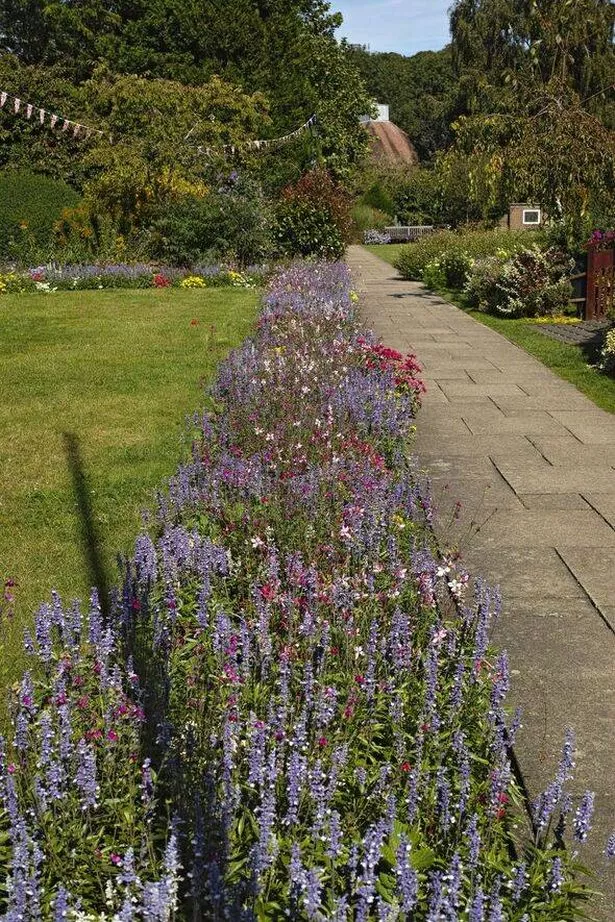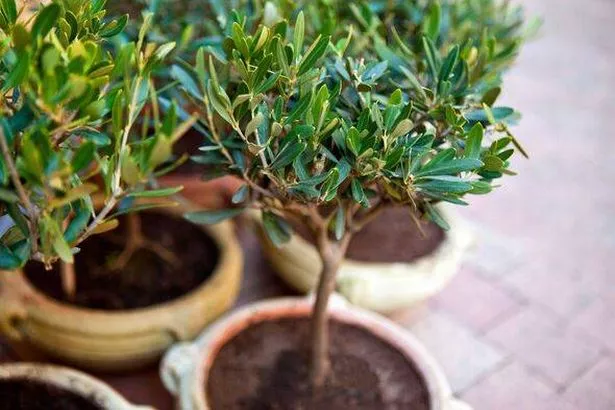With century-old records for warm May days expected to tumble this week, gardeners’ thoughts are beginning to turn to more drought-tolerant plants and Gardeners’ World’s Frances Tophill is here to help Frances has some valuable tips on future-proofing your garden(Image: BBC)
Frances has some valuable tips on future-proofing your garden(Image: BBC)
As the UK braces for record-breaking warm May days, gardeners are shifting their focus towards more drought-resistant plants. Frances Tophill, from BBC Gardeners’ World magazine, suggests several plants that can help future-proof your garden against impending heatwaves. With the hottest days of the year approaching, now is the perfect time to start planting.
The highest temperature ever recorded in the UK was a blistering 40.3C in July 2022, measured in Coningsby, Lincolnshire. As climate change intensifies, while our winters are predicted to become wetter, scorchingly hot, dry summers are expected to be commonplace across most of the UK.
On the Gardeners’ World YouTube channel, Frances has selected five appealing plants that will ensure your garden remains lush and plentiful even during the driest months.
 Mexican flea bane will do well even in very meagre soil(Image: (Image: Getty Images))Mexican Flea Bane
Mexican flea bane will do well even in very meagre soil(Image: (Image: Getty Images))Mexican Flea Bane
One such plant is the Mexican Flea Bane, or Erigeron karvinskianus. Despite its unappealing name, this daisy-like plant boasts flowers with white petals that gradually turn pinkish-purple in the summer,.
This semi-evergreen perennial forms expansive mats reaching heights of about 15-30cm. Frances highlights that the plant’s ability to grow in path or wall cracks indicates its resilience to drought, as its roots can survive with minimal soil.
“The roots have got hardly any soil, hardly any space, so they’ll be getting hardly any moisture when they’re growing,” she explained. “So they’re really fantastic for slowly spreading and taking over an area where very little else will grow.”
 Nepeta has a long flowering season(Image: (Image: Getty))Nepeta
Nepeta has a long flowering season(Image: (Image: Getty))Nepeta
Nepeta, commonly known as catmint, emits a “lovely smell” when its leaves are rubbed, according to Frances. This is another indication of its drought-tolerance.
“Any plant that, when you rub it, has a scent, is probably very good at coping with drought,” she pointed out.
Nepeta is a valuable addition to any garden, boasting lush lavender-blue flowers from late-spring to late-summer. “The great thing about it, is that you can cut it back a few times during the year, and the whole plant will then form another mound and often flower again,” she said.
 Cotton lavender will do well in very dry conditions(Image: (Image: Getty Images))Cotton Lavender
Cotton lavender will do well in very dry conditions(Image: (Image: Getty Images))Cotton Lavender
Santolina, also known as Cotton Lavender, comes in several varieties, all of which thrive in dry conditions. A typical example is Santolina chamaecyparissus, an evergreen shrub with narrow, silvery-green leaves and bright yellow flowers on long stalks, each about 2cm across.
It may take up to five years to reach its full height of half a metre, but it provides a burst of colour and interest almost immediately.
Frances advises: “It’s a really good performer in a very dry position. It won’t like to be anywhere that gets wet in the winter, so if you have a really sandy or rubbly area of the garden that’s baked by the sun santolina will be really happy there.”
 Sedum is a magnet for pollinators(Image: (Image: Getty Images/iStockphoto))Sedum
Sedum is a magnet for pollinators(Image: (Image: Getty Images/iStockphoto))Sedum
Sedum plants, with their water-storing fleshy leaves, are well-suited to hot, dry conditions. They also provide a haven for small wildlife, Frances explains.
“They have really good flowers for pollinators,” she says. “Many of them will flower, significantly enhancing biodiversity and attracting insects to your garden.”
Sedum’s adaptability and its ability to thrive in rocky soil make it an excellent choice for challenging conditions.
 Olive trees really elevate a garden, but be careful where you buy them(Image: (Image: Getty Images/iStockphoto))Olive trees.
Olive trees really elevate a garden, but be careful where you buy them(Image: (Image: Getty Images/iStockphoto))Olive trees.
For a consistently dry part of the garden, Frances suggests considering an olive tree.
However, they’re not the most budget-friendly option. She adds: “They can be pretty pricey if you get a lovely big specimen, but I think they’re worth it for the gorgeous big chunky stems and their silvery foliage.”
Frances cautions that olive trees are particularly frost-sensitive, requiring extra care during winter. She also stresses the importance of purchasing your olive tree from a trustworthy source.
She warns: “They need a plant passport so that they’re not carrying something called Xylella virus which is coming from the Mediterranean. So a good well-sourced tree is worth the investment because they’re so majestic, they’re so beautiful.
“And then if you’re very lucky and very sheltered,” she adds, “you may even get some olive fruits that you can cure and store and eat.”
 Frances warns that even drought-tolerant plants need to be well-watered at first(Image: (Image: BBC))
Frances warns that even drought-tolerant plants need to be well-watered at first(Image: (Image: BBC))
If you don’t fancy any of those and you’re yearning for a bit of diversity in your garden, Frances suggests looking for plants that have small leaves, often with a waxy sheen, lighter-coloured foliage, and frequently feature tiny hairs on their leaves, as they’re most likely to be drought-tolerant.
When visiting your local garden centre, don’t hesitate to see what’s on offer, and definitely tap into the knowledge of the gardening experts there for any extra pointers.
It’s important to remember that even though many varieties are labelled as drought-tolerant, almost all plants will require ample watering initially until they’re properly established.

